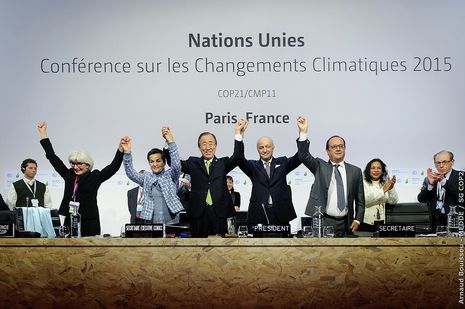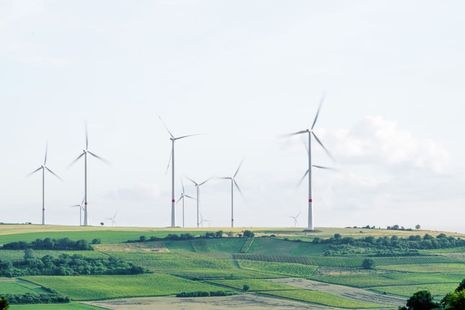Celebrating five years of the Paris Agreement
Five years on from the Paris Agreement first being adopted, Selin Zeyrek explores its impact on global efforts to combat the climate crisis

When it was adopted in 2015, the Paris Agreement represented a triumph in diplomacy and cooperation. Unlike its precursor, the Kyoto Protocol, the Paris Agreement brought together all countries (rather than just wealthy ones) to combat global warming, and provided a framework for developed countries to contribute financial support to developing countries as they work to reach these goals. Perhaps the most striking difference, however, is that the Paris Agreement has no legal requirement or enforcement method to ensure that countries transition their aims (officially called Nationally Determined Contributions or NDCs) first into policies, and then, crucially, into action.
“It is now vital that these pledges pass into legislation, policy, and most importantly, into action.”
Instead, the Paris Agreement requires countries to report their NDCs and the policies they implement to achieve them. The motivating force for countries is a sense of political expectation or “global peer pressure,” and so far, it appears to be succeeding. Certainly, it has proved more resilient and successful than the legally enforced Kyoto Protocol, which was never ratified in the US and did not restrict emissions from China or India, two of the biggest emitters in the world. In the Paris Agreement, countries are required to submit improved NDCs every five years, with the intention that they get more ambitious with each renewal. As a result, the contributing countries’ current aims are the minimum they will ever commit to.
Five years on, how successful has the Paris Agreement been in reaching its primary goal: to limit global warming to 2°C (ideally 1.5°C) compared to pre-industrial levels by the end of the century? Best scenario estimates suggest that the targets set by countries are insufficient to reach that goal. However, it is important to remember that the structure of the Agreement means that those targets will regularly be updated to reach the ideal trajectory. While most countries have almost but not quite met their targets, there are promising signs of progress and hope for individual countries as well as global trends.
“Countries must set ambitious targets for 2030 in order to meet their 2050 goals.”
In 2018, the Intergovernmental Panel on Climate Change (the IPCC) predicted that global emissions needed to reach net-zero by 2050 in order to meet the optimistic temperature increase of 1.5°C by 2100. Soon after, a wave of countries pledged to reach net-zero emissions by 2050, led by European countries such as Norway and the UK, as well as Chile, Japan and South Korea. China too, the largest emitter of carbon dioxide globally, announced in September 2020 at the UN general assembly that they would become carbon neutral by 2060. In total, 127 countries, representing 63% of global emissions, are discussing or have pledged mid-century net-zero targets.
While these targets are a positive development, it is now vital that these pledges pass into legislation, policy, and most importantly, into action. Countries must set ambitious targets for 2030 in order to meet their 2050 goals. So far, only 34 countries have submitted updated NDCs (the deadline for which was the end of 2020), 9 have proposed some, and 119 have not yet updated their NDCs.

Arguably, one of the most crucial areas of change is the transition from fossil fuels to renewable energy sources. The importance of this is clearly seen in the effect of lockdowns around the world in spring 2020, which showed that even when transport, industry, and large parts normal life came to a halt, emissions did not drop to the levels required to reach net-zero in time. In fact, they only fell by 17% compared to spring 2019 – largely because we are still reliant on fossil fuels for energy and transport.
Recent advances in renewable energy technology provide some hope. 90% of energy capacity installed worldwide in 2020 was renewable, largely driven by the growth of wind and hydropower in China and the US. Adair Turner, chair of the Energy Transitions Commission, remarked that the cost of wind turbines and solar panels have dropped dramatically by between 70-90%, which is much more than was previously expected. In some situations, they are now cheaper than fossil fuels, even without subsidies. Furthermore, Europe and India are on track to increase renewables by a record-breaking 10% by 2025, displacing coal as the biggest source of energy.
Prior to the Paris Agreement in 2015, climate models estimated that temperatures would rise by 3.5°C by 2100. After the Paris Agreement was adopted, that estimate dropped to 2.9°C, and as a result of the net-zero pledges, it dropped again to 2.1°C. In total, pledges made through the Paris Agreement have resulted in an estimated drop of 1.4°C. Make no mistake: the Paris Agreement has driven climate action by making climate change a global priority, including all countries in this common goal, and pushing progress in some of the biggest emitters. It is resilient and its framework is successful. The Paris Agreement is a success story due to its resilience, even through destabilising events, such as the US withdrawal and the coronavirus pandemic, and it continues to play a crucial role in global climate action.
 News / Uni Scout and Guide Club affirms trans inclusion 12 December 2025
News / Uni Scout and Guide Club affirms trans inclusion 12 December 2025 News / Cambridge Vet School gets lifeline year to stay accredited28 November 2025
News / Cambridge Vet School gets lifeline year to stay accredited28 November 2025 Science / Did your ex trip on King’s Parade? The science behind the ‘ick’12 December 2025
Science / Did your ex trip on King’s Parade? The science behind the ‘ick’12 December 2025 News / Cambridge study finds students learn better with notes than AI13 December 2025
News / Cambridge study finds students learn better with notes than AI13 December 2025 News / Pembroke to convert listed office building into accom9 December 2025
News / Pembroke to convert listed office building into accom9 December 2025








